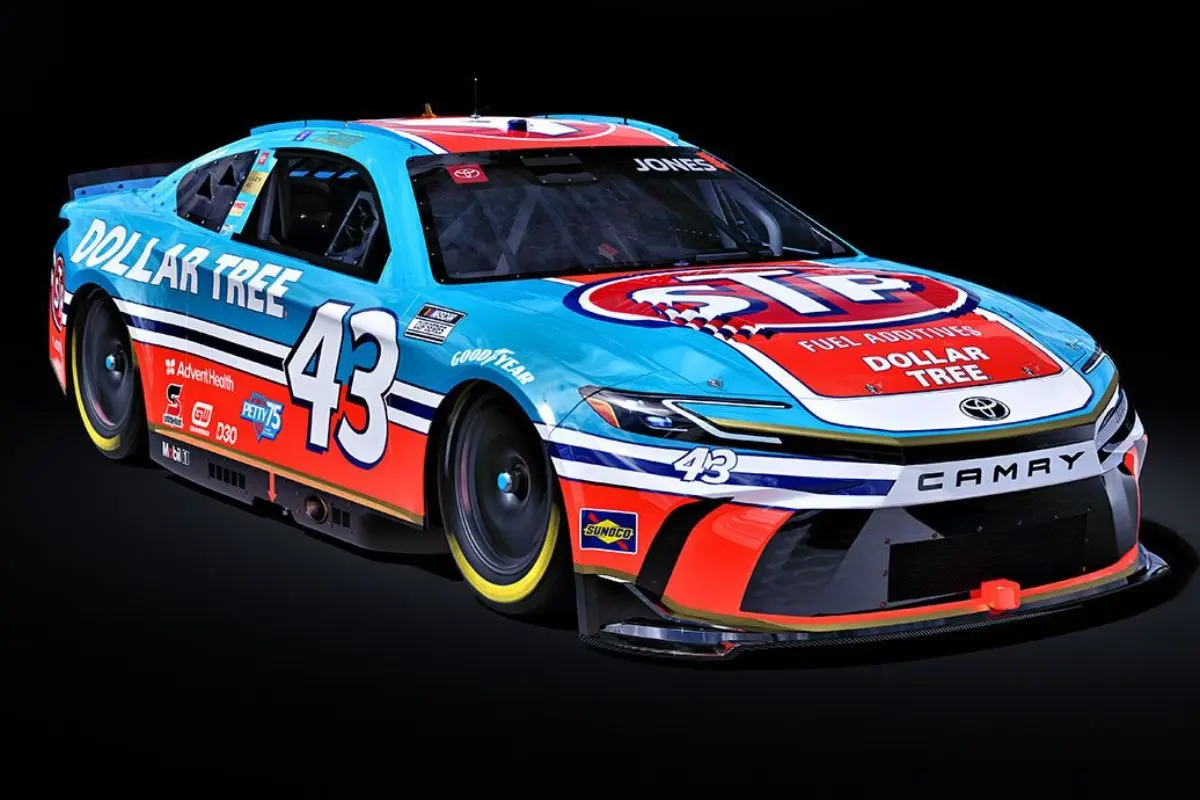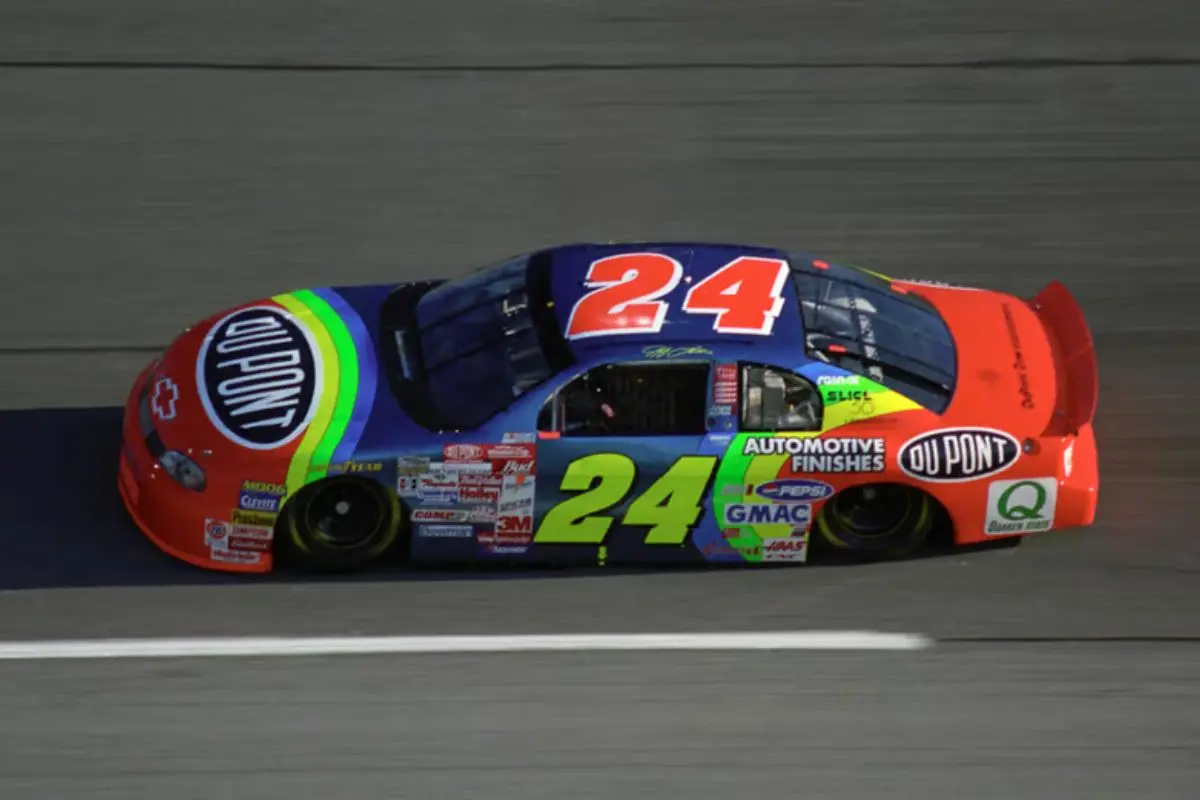NASCAR’s history is packed with unforgettable moments on track, but some of the most lasting memories have been made before the green flag ever waved. The sport’s most iconic paint schemes have defined entire eras, building legacies for drivers and teams while connecting generations of fans. From timeless classics like Richard Petty’s “Petty Blue” to Jeff Gordon’s bold “Rainbow Warriors” design, these cars transcended sponsorship and speed to become cultural symbols, leaving an imprint that still resonates in 2025.
Key Highlights
-
Richard Petty’s “Petty Blue” and STP Day-Glo Red No. 43 remains NASCAR’s most iconic scheme.
-
Jeff Gordon’s DuPont Rainbow Warriors car changed how paint schemes were used in marketing and fan connection.
-
Buddy Baker’s “Gray Ghost” set a speed record and stood out for its understated yet intimidating look.
-
Pop culture and one-off schemes, like Kyle Busch’s Indiana Jones car, brought entertainment and racing together.
-
Throwback weekends and patriotic designs keep historic schemes alive, connecting past champions to today’s NASCAR culture.
The Legacy of Petty Blue and the STP No. 43
No list of legendary NASCAR paint schemes begins without Richard Petty’s Petty Blue and STP Day-Glo Red combination on the No. 43. First appearing in 1972, this striking design quickly became synonymous with “The King,” a seven-time Cup Series champion whose dominance helped define NASCAR’s modern era.
The unique color choice wasn’t an accident—Petty mixed leftover blue and white paint to create the now-famous shade. The addition of STP’s vibrant red made the car instantly recognizable and tied it to one of the sport’s longest-standing sponsorship relationships. This paint scheme remains a staple of throwback events, symbolizing the power of identity and tradition in NASCAR.

Jeff Gordon’s Rainbow Warriors and the 1990s Shift
In the mid-1990s, Jeff Gordon’s DuPont-sponsored Chevrolet, nicknamed the “Rainbow Warriors,” changed the look of NASCAR forever. At a time when darker, simpler schemes dominated, Gordon’s car exploded with red, blue, green, yellow, and orange streaks across the hood and sides. The design matched his youthfulness and marked the start of a new era in NASCAR marketing.
This scheme wasn’t just visually daring—it became the backdrop for Gordon’s four Cup Series titles and over 90 race wins, making it an enduring favorite among fans and collectors. Its influence extended beyond the track, shaping merchandise, promotional campaigns, and how paint schemes could create lasting personal brands.
Understated Icons: The Gray Ghost and the Citgo Classic
Not all iconic paint schemes relied on bold color. Buddy Baker’s “Gray Ghost,” which dominated and won the 1980 Daytona 500, was a striking silver that radiated speed and intimidation. It looked different from everything else on track and matched the car’s record-setting pace that day. Decades later, Jeff Gordon honored this design during a 2016 throwback race at Darlington, showing its lasting impact.
Similarly, Wood Brothers Racing’s Citgo cars ran a clean red, white, and blue scheme for years, creating a timeless visual identity that became one of NASCAR’s most enduring team looks. Ryan Blaney’s 2017 throwback version paid tribute to Neil Bonnett’s original, highlighting the nostalgia these colors carry for fans.

Patriotic Designs and One-Off Pop Culture Specials
NASCAR has long embraced special schemes to mark national pride or pop culture moments. Martin Truex Jr.’s 2019 Coca-Cola 600 paint job blended Bass Pro Shops branding with stars and stripes, making a patriotic statement while honoring military tributes on race weekend. Jeff Gordon also debuted a flame-streaked American flag design in the 2010 Coca-Cola 600, merging his iconic rainbow with patriotic flair.
On the pop culture side, Kyle Busch ran an “Indiana Jones” car in 2008, promoting a blockbuster movie while battling at Darlington. Dale Earnhardt Jr.’s Batman v Superman livery in 2016 and Jeff Gordon’s Star Wars scheme in 2005 showed NASCAR’s ability to bring mainstream entertainment into motorsports, creating collectible moments for fans and sponsors alike. These one-off paint jobs expanded NASCAR’s cultural reach while adding fun and variety to the visual spectacle on track.
Why Paint Schemes Hold Such Power
A NASCAR paint scheme does more than decorate a car—it tells a story. For drivers, it reflects their personality, team legacy, or a key moment in their careers. For sponsors, it broadcasts their brand to millions of fans at the track and on TV. For fans, certain paint jobs represent entire chapters of NASCAR history, from championship runs to unforgettable underdog victories.
Throwback weekends at Darlington have proven how much emotion these designs carry. Seeing a classic No. 43 or DuPont rainbow scheme roar past reminds fans of why they fell in love with the sport. Even in 2025, paint schemes remain one of NASCAR’s most powerful connections between tradition, fandom, and modern racing culture.

News in Brief: How NASCAR’s Paint Schemes Made History
NASCAR’s most iconic paint schemes—from Richard Petty’s Petty Blue and STP red No. 43 to Jeff Gordon’s vibrant Rainbow Warriors car—have defined eras, told stories, and connected generations of fans. Other legendary looks like Buddy Baker’s Gray Ghost, Wood Brothers’ Citgo design, and one-off pop culture schemes added depth to NASCAR’s visual history. Patriotic tributes and throwback weekends keep these memories alive in modern racing. These designs continue to shape driver identity and fan loyalty.
ALSO READ: Richard Petty’s Fight and Boycott Against NASCAR’s Toughest Rule Change
